Making Marking Manageable

Marking, feedback and response to feedback are common words and phrases that keep appearing in many teachers conversations across the country. The workload of a teacher means you can never be ahead, within 24 hours you will have more books to mark. This year I have 7 classes and what equates to nearly 200 books and then homework books to mark as well. (This does not include my morning form time intervention groups or revision sessions). I teach a full timetable, so I’m aware of the challenges we face on daily basis as teachers to keep on top of marking. Within this blog I am going to talk about how I approach marking and then also point you in the direction of the top strategies I have come across to enhance the quality of marking and save time.
I've seen teachers across the country start to take the feedback and marking system into their own hands to try and created a semblance of a work life balance. I have to say, when I started developing and changing my marking last year, I used to get extremely frustrated that I would mark and leave challenges for students that just seemed to be ignored or passed over. I've had many pitfalls along the way to finding a style of marking that suits both me and my students.
Last year I developed this idea of pink box challenges within maths. I still use these, if students have made quick and simple mistakes. An example of this would be a student forgetting to simplify fractions, as a correction of work the said student would get three fractions to simplify. An orange box challenge or highlighted section would represent any literacy issues they needed to correct or be aware of. This in turn clearly highlights literacy within my maths books. These are my day to day corrections of work strategies.
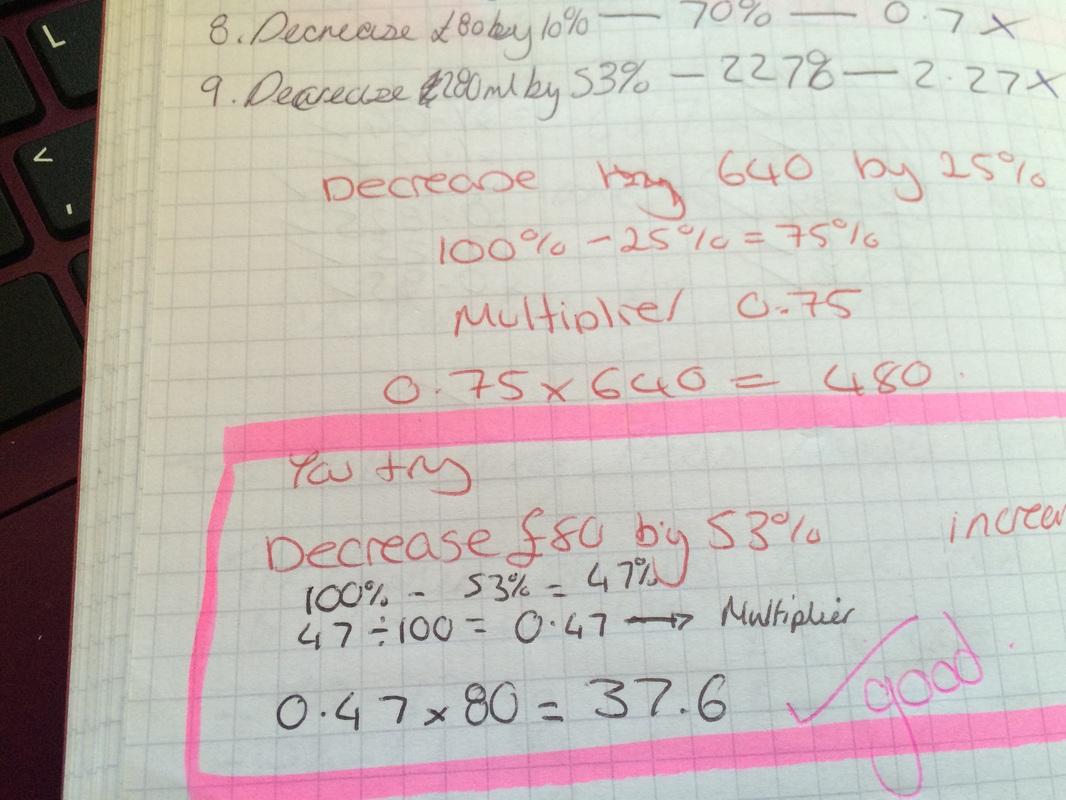



 As I often found selected students ‘couldn’t’ find the challenges I now use Tesco’s cheap index post it notes and place on the page where the student has a task to complete. I make it clear if post it notes disappear and the work hasn't been completed their will be consequences. Students within my lessons specifically know if they have a post it/ box challenge these are to be completed in the starter time unless I specifically state otherwise.
As I often found selected students ‘couldn’t’ find the challenges I now use Tesco’s cheap index post it notes and place on the page where the student has a task to complete. I make it clear if post it notes disappear and the work hasn't been completed their will be consequences. Students within my lessons specifically know if they have a post it/ box challenge these are to be completed in the starter time unless I specifically state otherwise.
I have found the students appreciate this and are seemingly making less of the ‘lazy’ mistakes such as forgetting their units of measure or to writing equals signs. I've also noticed a lot less spelling mistakes within their books. This method though seems like a lot of work as it personalises each students learning and it needs remarking, however it pays off in the long term.
This year I still use the pink and orange box challenges but more sparingly and now have end of module sheets where the big misconception or stretch tasks go. In my school we have developed both PoW and CoW time. These stand for perfection and correction of work. At the end of the module a student has to RAG objectives attached to levels, correct up to five spelling mistakes and also complete PoW questions. This means my CoW is my in lesson corrections and box challenges, which I make clear to highlight with a highlighter as explained above.
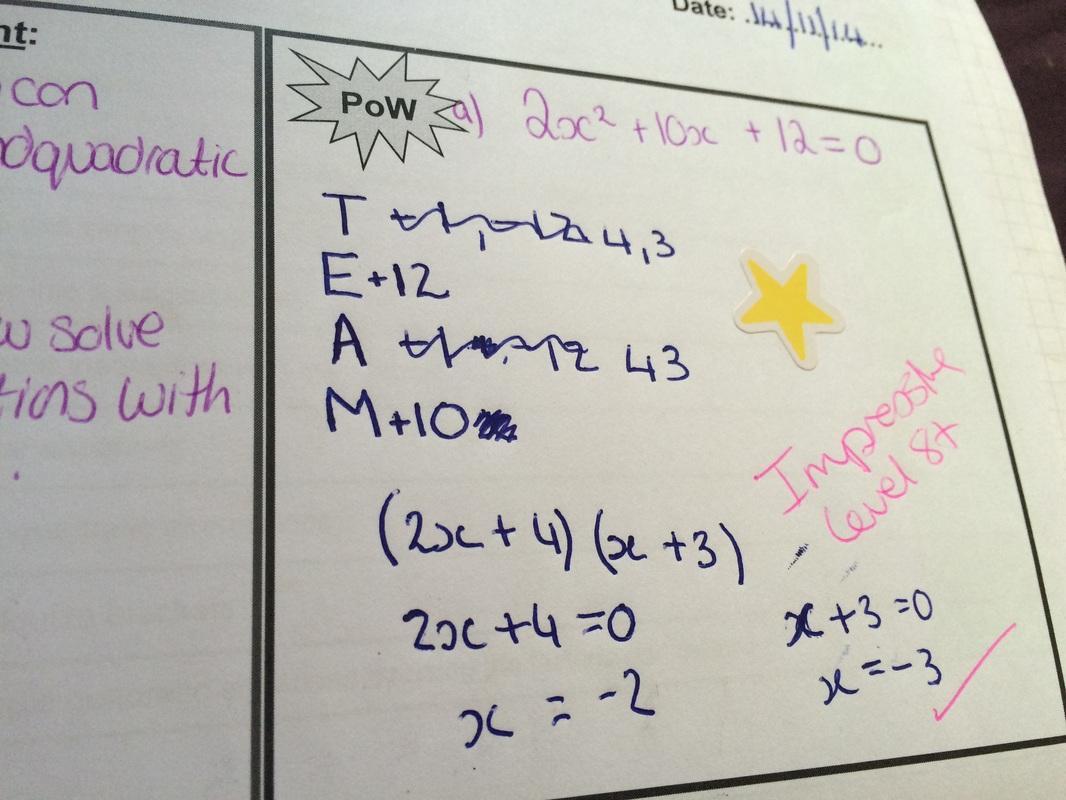
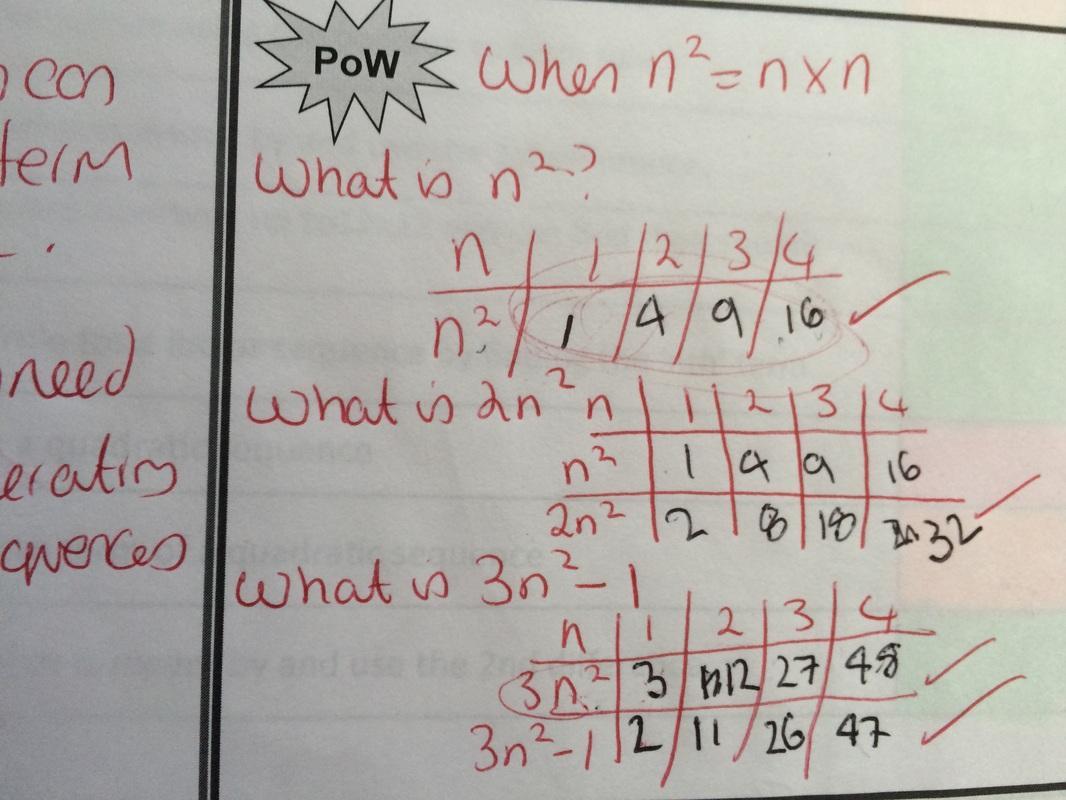
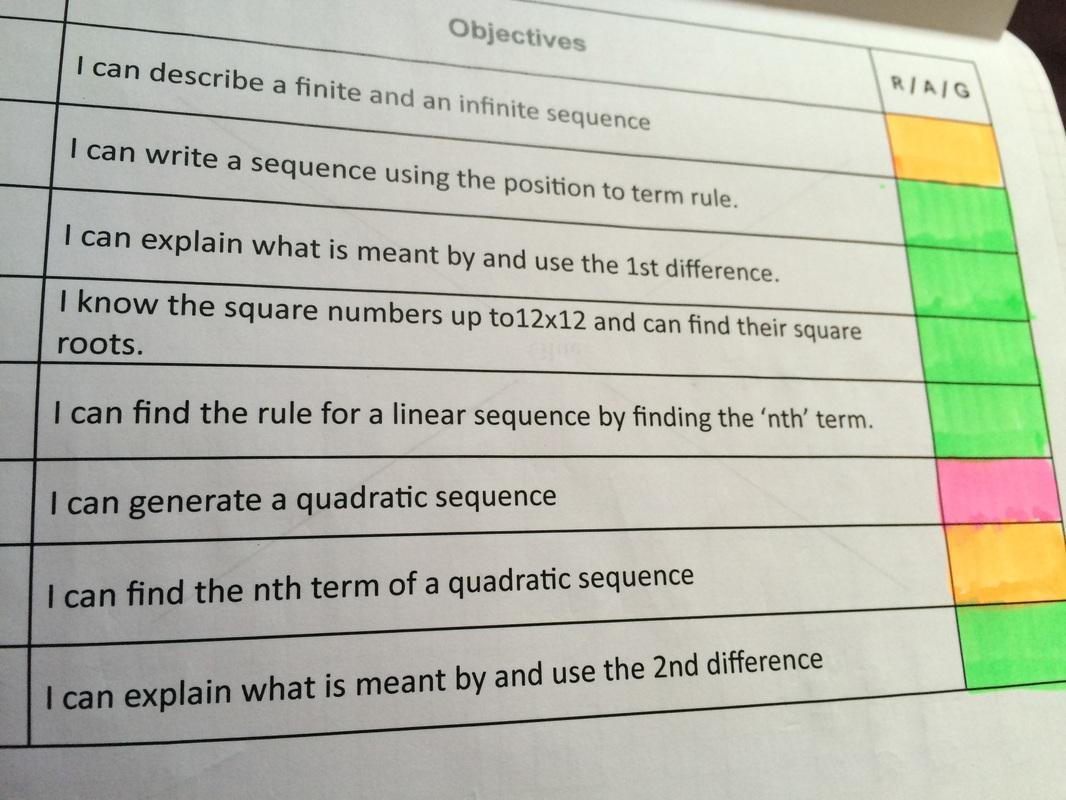
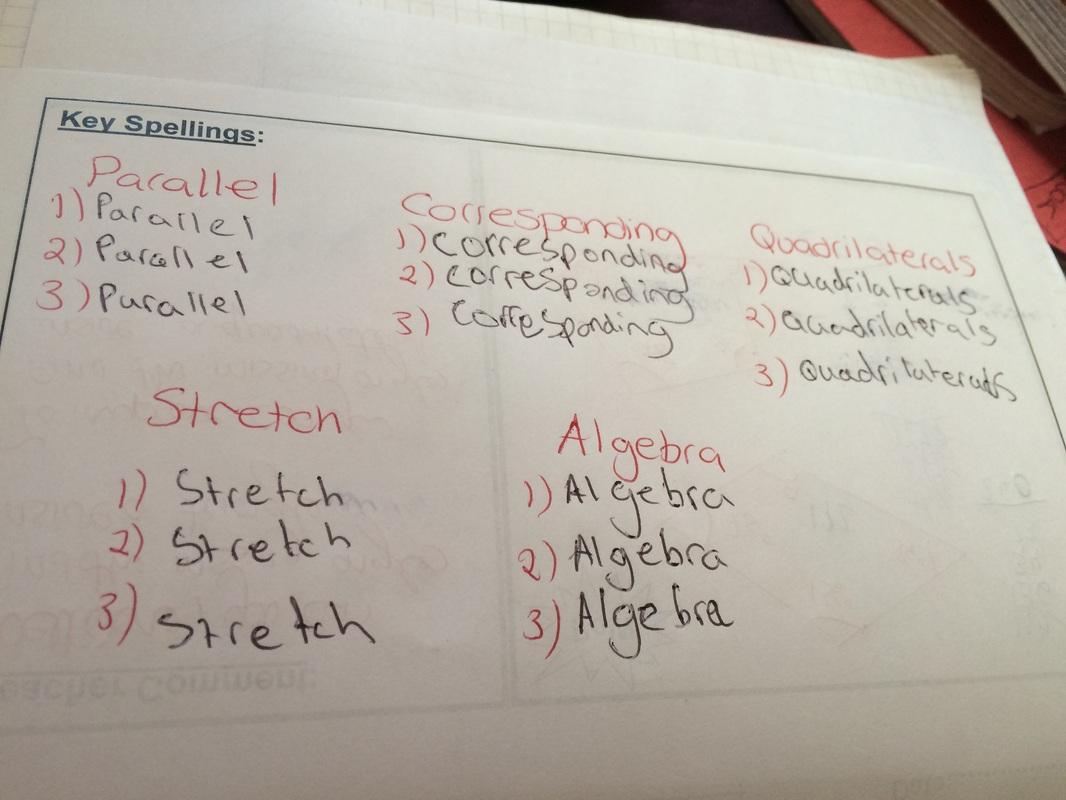
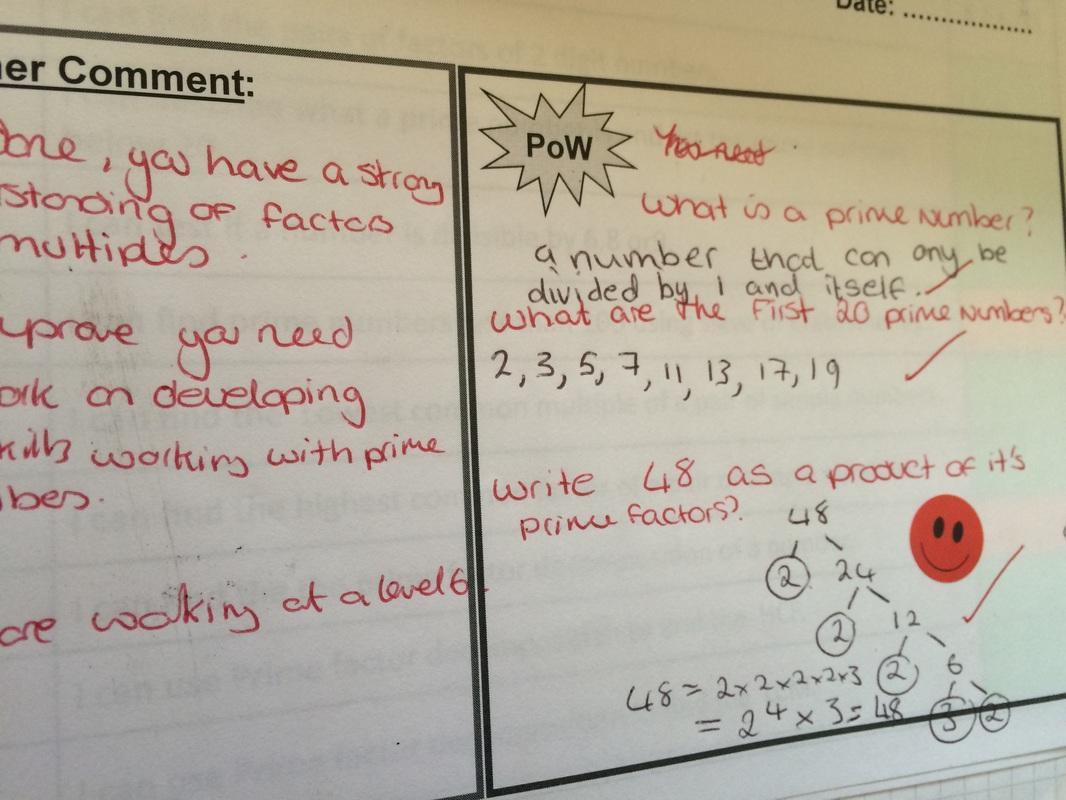
 Again the original form of these feedback sheets took a lot of time to fill out for each pupil, so I have now taken it a step forward where I write a question for all or most of the objectives on the sheet and a couple of stretch questions for those who are confident with all the work. This means the learning is still personalised when I assigned the students set question numbers however a lot less writing for me. I also stick in a PoW blank sheet on the next page so the students leave a space to complete their work and I have time to complete the sheets.
Again the original form of these feedback sheets took a lot of time to fill out for each pupil, so I have now taken it a step forward where I write a question for all or most of the objectives on the sheet and a couple of stretch questions for those who are confident with all the work. This means the learning is still personalised when I assigned the students set question numbers however a lot less writing for me. I also stick in a PoW blank sheet on the next page so the students leave a space to complete their work and I have time to complete the sheets.
It is however important that you go back remark the CoW and PoW and encourage second attempts with more support if mistakes are made. Again I use my pink highlighter to make corrections clear.
My top marking tips
I have picked up many ideas from twitter, which are useful in speeding up the day to day marking, below you can see my top five ideas.
 #RAG 123 by @listerKEV
#RAG 123 by @listerKEV
A simple but effective strategy which has taken twitter by storm. Teachers now across the country use this and I myself use it. You can either #RAG123 the students yourself when marking, allow the students in lesson to do it themselves or even both do it and complete.
The RAG relates to the students understanding of a piece of work and the 123 is the key difference as students have to think about their effort in a lesson. I find the students are very honest in doing this and are now starting to take more responsibility for low level disruption, this method in my lessons has moved a lot of students who would have previously been a 2 for effort to being a 1.
Click here or more information.
 Plasters by @ASTSupportAAli
Plasters by @ASTSupportAAliInstead of having to continually write out common mistakes for example remember capital letters and full stops or remember to use BIDMAS. @ASTSupportAAli came up with a great idea of making plaster stickers which you can just peel off and stick in when needed, saving you valuable time. More information can be found on his teacher’s toolkit.
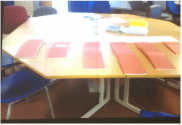 Literacy rank order
Literacy rank order The deputy head at my school recently discovered this method. Before marking place your books in stacks according to the student’s literacy levels. Either start at the top or the bottom but concentrate on using different and appropriate language according to the students literacy levels. You will find as you are marking in a systematic order it will help speed things up.
 Parental marking by @ASTSupportAAli
Parental marking by @ASTSupportAAliSend home a mark scheme with a homework task and allow the parents to mark it. Amjad has seemingly realised the parents can often be a lot harsher and stricter in their marking than you would be. It is a great technique to use to get parents involved with their child’s learning. More information about this can be found here.
 Bottomless Box ChallengeFor simple and quick solution mistakes draw a quick box using a highlighter and write a quick task. If the task may need an extended answer don’t place a bottom on boxes as this will encourage the students to continue writing and extend their answers.
Bottomless Box ChallengeFor simple and quick solution mistakes draw a quick box using a highlighter and write a quick task. If the task may need an extended answer don’t place a bottom on boxes as this will encourage the students to continue writing and extend their answers.
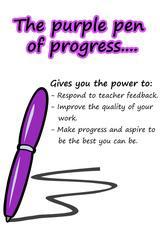 The purple pen of progress
The purple pen of progressI have seen floating around on twitter the idea of having a set coloured pen for students responses to feedback this allows for the students response, progress and development of answers to clearly be visible. More information can be found here.
I hope you have found this blog post useful and I look forward to reading your comments. For more ideas and resources visit @ASTSupportAAli marking medley on his toolkit.
Miss B
Tags: Feedback, Marking , AFL, Whole School
Comments (5)
-
-
Guest - Ethan
Yes, I have found your website on google. After reading this wonderful stuff on this website. I totally agree with you and i have share this idea on social media. Thank you.
0 Like -
-
Guest - Iris
I have read a few of the articles on your website now, and I really like your style of blogging. I added it to my favorites blog site list and will be checking back soon.
0 Like -







Leave your comments
Login to post a comment
Post comment as a guest